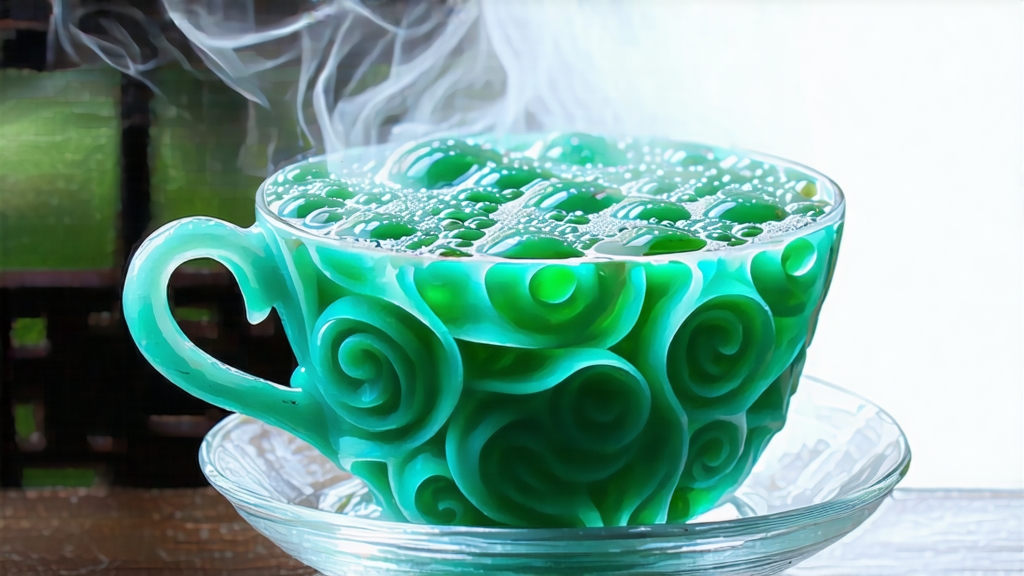
Tucked between the mist-laden hills of Dongting Mountain and the gentle ripples of Taihu Lake in Jiangsu Province, Biluochun—literally “Green Snail Spring”—has been seducing tea lovers since the late Ming dynasty. Legend claims a tea picker ran out of basket space and tucked fresh leaves between her breasts; the warmth and floral scent of her skin inspired the imperial name “Scary Fragrance.” The Kangxi Emperor, smitten by the aroma but unsettled by the name, rechristened it Biluochun in 1699, referencing its snail-shell curl and spring harvest. Thus a humble mountain tea entered the palace and, centuries later, the global stage.
Although all Biluochun comes from the same tiny corner of China, the microclimate creates two distinct styles. “Mountain” tea, grown on Dongting’s rocky peaks above 300 m, is shaded by fruit trees—peach, plum, apricot—whose blossoms perfume the leaf, yielding a cup that tastes of warm honey and white peach. “Lake” tea, cultivated on lower alluvial terraces, receives more sun and silt; it is grassier, brighter, and slightly astringent. Purists insist only the mountain version deserves the ancient name, yet both share the same plucking standard: one tender bud plus the adjacent leaf, no longer than 2.5 cm, picked before Qingming when spring thunder first stirs the soil.
The craft that turns these downy shoots into jade spirals has changed little in 400 years. Withering is skipped; instead, the leaves are “kill-green” within four hours of plucking to lock in spring. A wok heated to 180 °C is polished with a lump of beeswax; the tea master swirls 250 g of leaves for three minutes, using only wrist circles and finger flicks. Temperature drops to 120 °C for the first “rub,” when leaves are rolled against the wok’s wall to break cell walls and release sap. The critical second rub occurs at 80 °C: palms press the leaves gently, coaxing them into the signature spiral while microscopic hairs tuck themselves inside, giving the finished tea its silvery sheen. A final 60 °C “dry stroke” sets the shape and lowers moisture to 5 %. The entire process takes 45 minutes, during which the master never leaves the wok; one missed second can scorch the bud or unravel the curl.
To brew Biluochun abroad, choose still spring water low in minerals; hard water dulls its orchid note. Pre-warm a tall glass or a 150 ml gaiwan; glass reveals the “dancing” of leaves, a visual hallmark. Use 3 g of tea—about two level teaspoons—for 200 ml water cooled to 75 °C. Pour along the glass wall to avoid burning the tips; the first infusion should last 45 seconds. Leaves sink in slow motion, unfurling like miniature ferns, while a pale celadon liquor gathers. Decant completely to prevent bitterness; the second steep, at 70 °C for 30 seconds, often delivers the most fragrance. A third infusion at 80 °C for one minute yields a lighter, mineral-sweet cup. High-grade mountain Biluochun withstands five steeps, each revealing a different facet: peach, snap pea, sweet corn, wet stone, and finally a return to spring water itself.
Tasting begins with the dry leaf. Bring the glass under your nose without water; a fine mist of aroma should rise, reminiscent of lychee and narcissus. After the first infusion, sniff the inside of the lid or the empty glass; top notes of vanilla and lily should appear, proof that the tea was fired over a fruit-wood flame. Sip with lips pursed, drawing air across the liquor; the texture should feel like silk suspended in water, a sensation Chinese tasters call “living broth.” Swallow and wait three breaths; a cooling sensation at the back of the throat, called “ginger flower,” signals amino-acid richness. Finally, examine the spent leaves: intact buds the color of fresh spinach, each still sporting a single crease where the master’s thumb once pressed.
Beyond the cup, Biluochun has become a cultural emblem of Jiangnan refinement. During the Qing dynasty, scholars traveling to Beijing carried sealed bamboo tubes of Dongding spring water so they could brew authentic Biluochun in the capital. Today, Suzhou tea houses stage “spring listening” sessions on the vernal equinox: guests sit blindfold